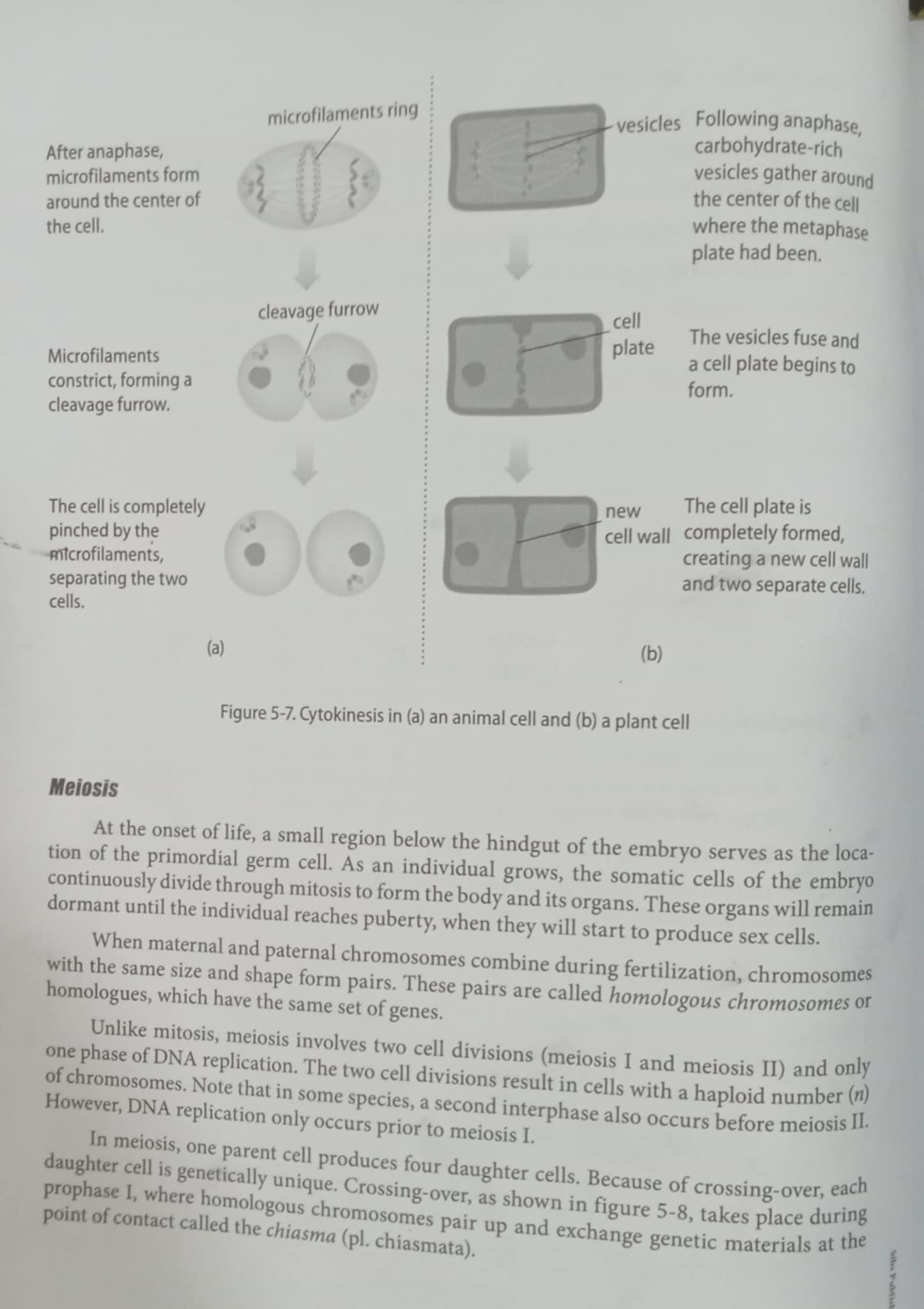What are the differences between cytokinesis in animal cells and plant cells?

Understand the Problem
The question pertains to the process of cytokinesis in cells, comparing the mechanisms in animal and plant cells, specifically focusing on the phases described in the figures provided.
Answer
Animal cells form a cleavage furrow; plant cells form a cell plate.
Cytokinesis in animal cells occurs by forming a cleavage furrow where the cell membrane pinches inward, facilitated by microfilaments. In plant cells, cytokinesis involves the formation of a cell plate arising from vesicles that coalesce at the center of the cell and develop into a new cell wall.
Answer for screen readers
Cytokinesis in animal cells occurs by forming a cleavage furrow where the cell membrane pinches inward, facilitated by microfilaments. In plant cells, cytokinesis involves the formation of a cell plate arising from vesicles that coalesce at the center of the cell and develop into a new cell wall.
More Information
Animal cell cytokinesis is driven by the contractile ring theory, involving actin and myosin, whereas plant cell cytokinesis is distinct due to the rigid cell walls that necessitate building a cell plate for separation.
Tips
A common mistake is confusing the processes due to similarities in the purpose of division but not the mechanism.
Sources
AI-generated content may contain errors. Please verify critical information